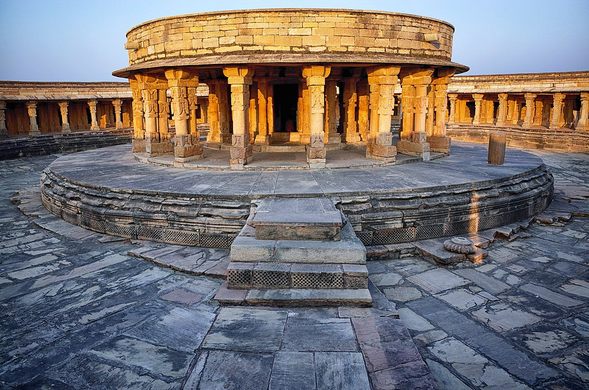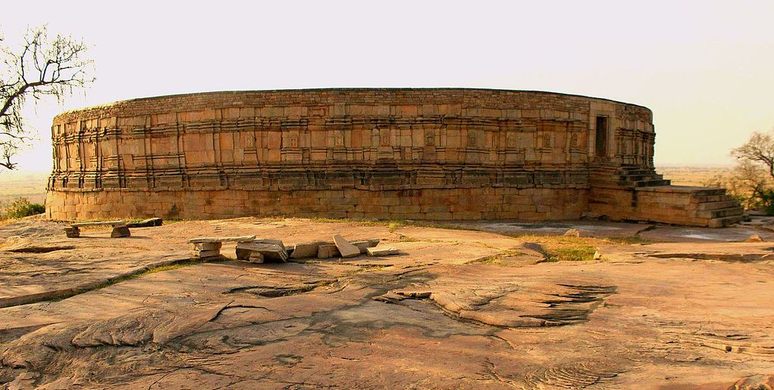Chausath Yogini Temple
This ancient goddess temple inspired the design of India’s Parliament House.
In ancient times, the Yogini Temples of India celebrated the feminine. They were built in a circular style, adorned with exquisite feminine figures, and roofless—open to the natural world. This was a time when female temple dancers, bejeweled and sensuous, danced and sang in the temples, and were bound to the deity, not to any one man.
The Chausath Yogini Temple of Mitaoli was one such temple. Constructed in the 11th century, near Gwalior in Madhya Pradesh, it is one of the few remaining Yogini Temples still in good condition. Built on a hillock, it commands an impressive vista. The circular wall has 64 (“chausath” means 64) chambers that once held statues of female forms. In the center is an open courtyard with a pavilion for public rituals, including dancing. The chambers today hold Shiva Lingams.
The temple is in a Seismic Zone 3, and has withstood the many earthquakes over the centuries without any damage—probably owing to its circular structure. This feature may have been one of the reasons that the Indian Parliament House in Delhi, built by the British in the 1920s, was inspired by the Chausath Yogini Temple of Mitaoli and also built in a circular style. The architectural similarities between the buildings are well noted.
According to Indian mythologist Devdutt Patanaik, this is ironic as the British suppressed goddess worship in India, and saw temple dancers as prostitutes, not believing they could have agency over their lives or bodies. They ushered in an era of patriarchal puritanism that reduced women’s rights and delegitimized the feminine hold over temple rituals and temple wealth, already eroded by centuries of Mughal rule.
A Yogini is a female practitioner of Yoga, and they represent universal, divine energy that exists in all things. They are the embodiment of spiritual grace and harmony. The Yogini Temples, like the one at Mitaoli, were built by ancient architects who “imagined the temple as the reclining body of a languid woman. Temples were an architectural celebration of sensuality and fertility,” according to Patanaik.
Many visitors feel an aura of mystery at this Yogini Temple, and the others that have survived. There is very little known about them, so much has been lost to time. The Yogini Temple in Orissa still has the feminine figures intact, which gives us a better idea of how the Chausath Yogini Temple of Mitaoli may have looked.
The Chausath Yogini Temple of Mitaoli has been declared an ancient historical monument by the Archaeological Survey of India.
Know Before You Go
Also known as Ekattarso Mahadeva Temple, it’s about 40 kilometres from Gwalior, near Morena. Look for signs to the Padhawali Temples, they are nearby.


















Follow us on Twitter to get the latest on the world's hidden wonders.
Like us on Facebook to get the latest on the world's hidden wonders.
Follow us on Twitter Like us on Facebook